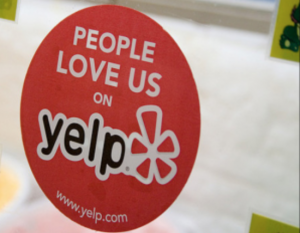4 Reasons Why Restaurants Lose Money
It’s no secret that the restaurant industry is tough. It’s hard to get started and even harder to stick around long enough to accumulate a profit. According to a study done by Ohio State University, 60 percent of restaurants change ownership or close in the first year of business, and 80 percent fail within the first five years. But why is this the case? It’s true that failure is a common part of life in the restaurant industry, but it doesn’t have to be. Here’s a quick breakdown of four of the biggest dining faux-pas and how to avoid them.
Lack of online presence
In this tech-savvy 21st century, technology allows customers to have more access to dining options than ever before. The National Restaurant Association reports that 88% of adults browse the menu online before visiting a new restaurant. If you don’t have an online presence, you’re far more likely to lose business to rivals that have already established a positive online reputation. Luckily, there’s an easy fix for this. Blogs are an incredibly useful tool to generate interest in your brand without bombarding customers with emails day in and day out. Furthermore, with the rapid increase of user-review sites like Yelp, it is more important than ever that customers leave satisfied with their dining experience. One of the best ways to maintain a positive online presence is from positive reviews left by happy customers.
reputation. Luckily, there’s an easy fix for this. Blogs are an incredibly useful tool to generate interest in your brand without bombarding customers with emails day in and day out. Furthermore, with the rapid increase of user-review sites like Yelp, it is more important than ever that customers leave satisfied with their dining experience. One of the best ways to maintain a positive online presence is from positive reviews left by happy customers.
Faulty inventory management
When a customer dines at a restaurant, they like to know that what they see is what they’ll get. Incorrect information on a menu can be a major turn off to customers. Imagine ordering something and then being told once, maybe even twice, “We’re sorry, it turns out we’re actually out of that item.” An organized, up-to-date inventory will minimize these awkward interactions, and more importantly, decrease the likelihood of profit losses. Because of the intense amount of attention and accuracy required, inventory management is easily one of the most difficult aspects of any business. However, there are several ways in which you can avoid those inventory-related headaches. For example, cataloguing weekly purchases, utilizing accurate and effective cheat sheets and putting those numbers to use. (Check out this blog for in-depth inventory tips and tricks!)
Successful Restaurants Thrive on Alcohol Sales. Increase Your Sales with Uncorkd’s Guide to Modernizing Your Bar
Uninformed staff
Easily one of the most awkward dining interactions is asking server a question and watched them struggle to bluff their way through an answer. It’s cringe-worthy, and we’ve all been there. Over the past few years, the internet has developed an incredibly knowledgable client base. When arriving at a restaurant, there’s a good chance customers will enter already knowing a thing or two about the menu. Restaurant staff should be prepared for a customer to pick their brain. The more information they can give, the more they’ll sell, and more importantly, the more comfortable they’ll feel interacting with customers. A customer might not remember every ingredient in their chicken cordon bleu or the vintage of their bottle of wine, but they’ll always remember the experience they had at your restaurant.
an incredibly knowledgable client base. When arriving at a restaurant, there’s a good chance customers will enter already knowing a thing or two about the menu. Restaurant staff should be prepared for a customer to pick their brain. The more information they can give, the more they’ll sell, and more importantly, the more comfortable they’ll feel interacting with customers. A customer might not remember every ingredient in their chicken cordon bleu or the vintage of their bottle of wine, but they’ll always remember the experience they had at your restaurant.
Poor menu engineering
A restaurant’s menu is the most up-close-and-personal point of sale connection with your customer. It should express the personality of your establishment as well as efficiently describe what you have to offer. If a menu is too large and lacks focus, customers may become frustrated. If it is too difficult to understand, customers may feel intimidated into ordering something they’re familiar with instead of branching out to new dishes. Menus that create problems for clients will decrease the likelihood that they’ll return. If you’re interested in having all the control you need over your menu at the touch of a button, it may be time to look into digital menus. Digitizing your menu allows you to easily make any changes you may need while avoiding the hassle of printing costs.
Stop losing money!
If your restaurant experiences problems with one or all of the issues listed above, don’t forget there are solutions that can keep you from burning a hole in your pocket. A positive online brand, a tightly run inventory, well-versed employees and an efficient and inviting menu are just a few ways to keep your business up and running and defeating those 60 percent odds.
- The Rise of the Mocktail - August 11, 2017
- Get Your Bar Game Ready For Football Season! - August 8, 2017
- An Insta’s Worth A Thousand Words… - August 4, 2017








